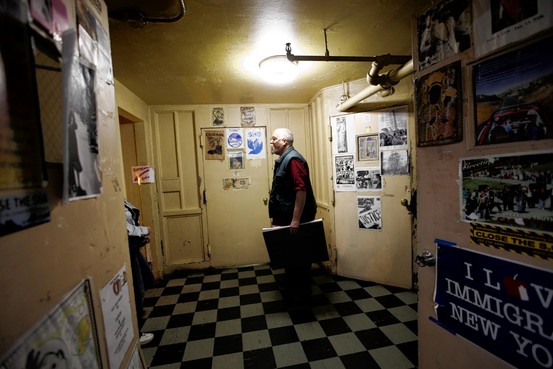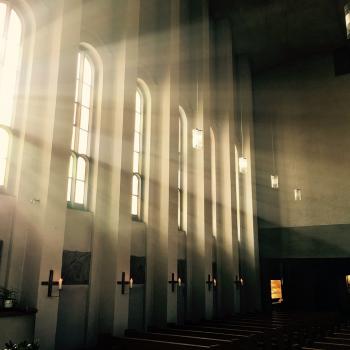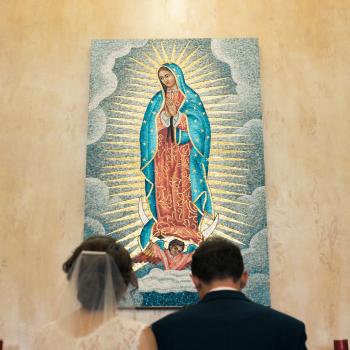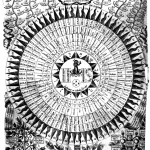
What is it like to live and work among the poorest of the poor in New York City?
From the Wall Street Journal, here’s a rare glimpse at the volunteers who live at the Catholic Worker:
Felton Davis is one of a dozen folks who live and work at Maryhouse and St. Joseph House, East Village shelters run entirely on informal donations and volunteer labor. Rooted in the New York-bred philosophy of Catholic anarchism known as the Catholic Worker movement, their aim is to live in solidarity with the “friends” they feed and house. When Mr. Davis invited me to visit, I kept waiting for approval from some sort of Maryhouse official. I didn’t realize that no one is in charge—the highest office is volunteer.
When we finally met up, Mr. Davis, a 60-year-old former postal clerk, was dressed in his usual outback-ready plaid shirt, cargo vest and jeans, culled from the donated-clothes closet. He gave a quick tour of Maryhouse. With its creaky wood floors and peeling paint, the place has good vibes. It’s housed in a former music school on East Third Street with a handsome auditorium. Downstairs, the supply closets brim with donated food, clothing and toiletries—bags of stuff appear every day on the front stoop. Meals, served in the pink and red dining room, are prepared in the sunny back kitchen with a cement floor and an old iron stove. The school’s tiny practice rooms were long ago converted to bedrooms, each wide enough for a bookshelf and a single bed.
Mr. Davis spends most afternoons watching the door and supervising the showers, but today’s agenda includes a rare trip to the Astor Place Kmart to buy socks and ladies’ underwear. In the morning, a homeless friend had declined a bath, saying, “Why should I bother showering if I have to put on dirty underwear?” Mr. Davis had no argument.
Strolling past the neighborhood’s crowded cafes and sparkling glass condos, Mr. Davis answered nosy questions about volunteer life. His possessions consist of his donated wardrobe, a wall of books and a $500 laptop. He eats all his meals at Maryhouse. His phone is the pay phone in the hall. He does email at the library. He doesn’t do restaurants or shows. This spring, he went with a pal to see Martin Scorsese’s “Hugo.” “That was $37.50, it was in 3-D,” he says, shaking his head at the memory. “It wasn’t worth it!”
Some Maryhouse volunteers take a $20 weekly stipend (variously referred to as “ice-cream money” or “cigarette money”), but many decline. They share a monthly MetroCard pass. They once pulled newspapers from the trash, but now that everyone in the East Village reads the paper online, they share a single subscription to the New York Times.
At Kmart, it takes Mr. Davis considerable effort to select five packs of socks and underwear. When I follow behind at the register and casually blow $2.29 on a packet of nuts, it’s the end of the world: “You just spent a fortune! For what! Ten cashews?” No, he does not want to try them.
All this economizing pays off. The $400,000 operating budget, kept in a checking account at the local bank, produces nearly 1,000 meals a week for the homeless and buys food, clothing and shelter for the volunteers and nearly 70 guests, including a family of refugees from the Congo. That’s less than $4,000 per year per resident—about what I pay for my dog walker.











